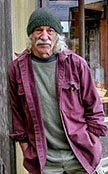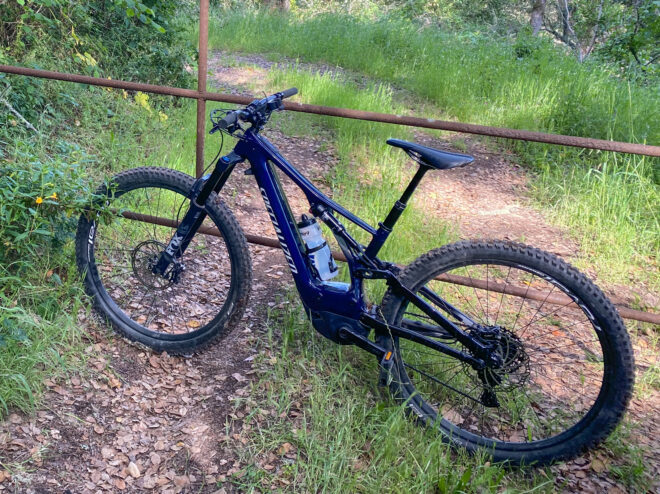Strawberry ’86 Jam: John Hartford / Bela Fleck / Doug Dillard / Sam Bush / David Greer / Pat Flynn
From Doug Armstrong


Strawberry ’86 Jam: John Hartford / Bela Fleck / Doug Dillard / Sam Bush / David Greer / Pat Flynn
From Doug Armstrong
Epiphyllum oxipetalum, queen of the night cactus that blooms only at night, in our greenhouse. Lesley has been checking it every night and last night, voila! In India, it’s called Brahma Kamalam, named after the Hindu god of creation. In Japan, it is called “Beauty under the Moon.” It is very fragrant, may bloom once a year for a few days.
Two more photos from Mill Valley Yurts in Cornwall, U.K, as shown in previous post.
I recently got an Instagram post from Lisa Mudie at Mill Valley Yurts in Cornwall, U.K, along with some photos. (They rent yurts and cabins in a rural setting.) I asked her to email me, and she wrote:
“Thirteen years ago we started a rustic campsite in our beautiful Cornish Valley a few miles from the rugged Atlantic coast which has evolved over the years into a crazy mix of hobbit huts, wooden yurts, cabins, and gypsy vardos. All handmade by us using reclaimed materials and all Cornish timber. Our latest purchase is a mobile sawmill and 26 tonnes of local oak … now we can really start building!”
Surfer’s shack built by Bruno Atkey on the “Wild Coast,” about 40 miles by north of Tofino (reachable only by sea–no roads), on the west side of Vancouver Island. We went in Bruno’s 17-foot aluminum fishing boat, with 50 HP rope-pull-starter outboard motor), stayed there a couple of nights, fished, surfed, drank whiskey, and took a driftwood-fired sauna when I was shooting photos for Builders of the Pacific Coast. Bruno was one of the first surfers on Vancouver Island.
This is a newsletter I send out maybe once a month. If you’d like to be on the list to receive it, you can sign up for email delivery of the Gimme Shelter newsletter here.
“We must realize that the world as it is, isn’t worth saving; it must be made over.”
–John Rice, founder of Black Mountain College, 1933
It was, of course, completely unplanned, but we came out with this book about doing stuff at home at precisely the time that people had to start staying at home. There are dozens of things you can do en la casa, besides staring at screens of various sizes. Here are a few pages from the book:
Get something done. Bake bread, plant (more) vegetables. Sprout some alfalfa seeds. Start a small flock of chickens. Make a table. Knit a hat. Fix that leaky faucet. Straighten up that messy desk/workplace/shop.
One time, years ago, I was seriously depressed. I went out and spent several hours cleaning up my shop, and it really lifted my spirits. I often think about that — making lemonade…
I was scheduled to do two presentations at the Mother Earth News Faire in Nashville on May 16th, then flying to Italy to attend the La Biennale di Venezia, a bi-annual architectural exhibition in Venice opening May 23, where our book Shelter was being featured as having had an influence on architecture. Sigh.
“Hoping that endlessly won’t be for long.”
–Townes Van Zandt
 In 1979, I discovered a homemade book for athletes called Stretching. I was working as a carpenter and gardener, and the book helped me fix my back problem. I wasn’t actively publishing then, but I contacted the authors, who were living in Southern California. I called Bob Anderson and said, “What about stretches for carpenters, or truck drivers or waitresses?” (By then, they had sold 35,000 copies out of a garage at Bob’s folks’ house.)
In 1979, I discovered a homemade book for athletes called Stretching. I was working as a carpenter and gardener, and the book helped me fix my back problem. I wasn’t actively publishing then, but I contacted the authors, who were living in Southern California. I called Bob Anderson and said, “What about stretches for carpenters, or truck drivers or waitresses?” (By then, they had sold 35,000 copies out of a garage at Bob’s folks’ house.)
Long and short of it: Bob and Jean moved to Bolinas, and over the course of 3 months, we added many more stretching routines, and Jean did all new drawings. We printed 50,000 copies on the first run, Random House was our distributor, and boom! It took off and never stopped, now at 3¾ million copies in 23 languages.
The big deal about this edition is the new section on smartphone problems, mainly bad posture, but also stiffness or pain. There are some simple suggestions for improving your posture, as well as new stretching programs for smartphone users.
Pub date: October, 2020
Note to our friends in other countries: We will be negotiating contracts for this edition in all languages.
 A life changer. A Specialized Turbo Levo, with carbon fiber frame. After 25 years of competitive sports, I’ve grown tired of running the same trails, bored with lifting weights, dealing with the constant injuries. These days I want adventure when exercising, and the bike provides that. It’s not only got a brain, but it calls me to get out there. I can go so much further.
A life changer. A Specialized Turbo Levo, with carbon fiber frame. After 25 years of competitive sports, I’ve grown tired of running the same trails, bored with lifting weights, dealing with the constant injuries. These days I want adventure when exercising, and the bike provides that. It’s not only got a brain, but it calls me to get out there. I can go so much further.
Plus it’s “pedal-assist,” meaning you’ve got to pedal. I’m going for 2-3-hour rides. I keep the level of exertion reasonable, and get to see a lot of the countryside while getting exercise. When I first got it, I was maxing out with “turbo” assistance, now I’m scaling back so I have to pedal harder and get a better workout.
 I’ve been riding out in the woods. When I get to a spot where I have to go on foot, I find a spot off the trail, lock the bike with a cable, disconnect the power, and cover it with foliage. Then I’ll put markers on the trail so I’ll know where it is upon return.
I’ve been riding out in the woods. When I get to a spot where I have to go on foot, I find a spot off the trail, lock the bike with a cable, disconnect the power, and cover it with foliage. Then I’ll put markers on the trail so I’ll know where it is upon return.
My friend Bruno Atkey told me that yerba mate tea has as much caffeine as coffee, without some of coffee’s side effects and, by golly, he’s right. I’ve started making it in our espresso machine, and it does have a stimulating kick. Only thing is, I enjoy the ritual of roasting and grinding beans, then trying to get espresso in crema form, then foamed milk for a latte — and zoom!
Author Michael Pollan experimented with giving up coffee, with interesting results: www.npr.org/sections/health-shots/2020/02/10/803394030/michael-pollan-explains-caffeine-cravings-and-why-you-dont-have-to-quit
In our book we show garden visitors: foxes, skunks, hawks, great blue herons, dozens of other bird species, butterflies, honeybees, spiders. Over the years I’ve come to realize that we’re only here temporarily, that the other forces of biological life, including termites, ants, and woodrats, are always chipping away at our self-made kingdom, and that eventually, they’ll take back over.
“Shameless Commerce” is what the Car Talk brothers called their commercials, and I’ve always felt ambivalent about sales pitches in these newsletters or on my blog. But nowadays, we need to survive, so:

A couple of little beauties patrolling the vacant spaces with their ma yesterday. Notice how deer always angle their ears at you like radar antennas.
Papaver somniferum in the garden this week
“Take it easy (and) if you can’t take it easy, take it as easy as you can.”
–Shaggy Man, on the Yellow Brick Road to Emerald City
 This is a four-story coffee drying plant built in the late 1800s on the banks of the Guacaica River in Caldas, Colombia. The entire building is framed with bamboo, structurally remarkable for the size of the building and the heavy tile roof. From the book Tropical Bamboo by Marcello Villegas; One of the best books ever on bamboo. All the buildings, furniture, and other bamboo objects in the book are in Colombia.
This is a four-story coffee drying plant built in the late 1800s on the banks of the Guacaica River in Caldas, Colombia. The entire building is framed with bamboo, structurally remarkable for the size of the building and the heavy tile roof. From the book Tropical Bamboo by Marcello Villegas; One of the best books ever on bamboo. All the buildings, furniture, and other bamboo objects in the book are in Colombia.
The Heddal stave church in Norway, is 25 meters long, 17 meters wide, and its 3 turrets are 29 meters tall. Built in the 13th century, reconstructed in 1849, then again in 1950. “An architectural masterpiece of the Middle Ages.”
A berry good time of year. L-R, the first is a wild cut leaf blackberry; the second is a boysenberry. Third is familiar wild Himalayan blackberry. Next, in order, in our garden, are red currants, blueberries, raspberries.